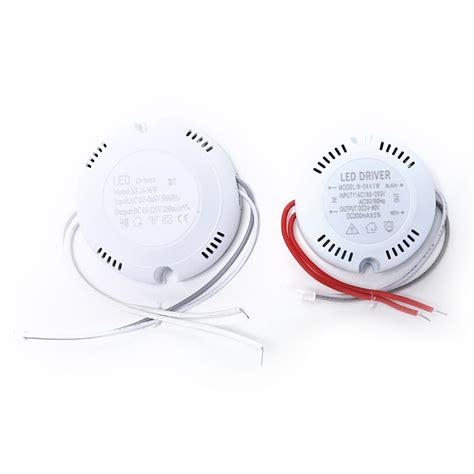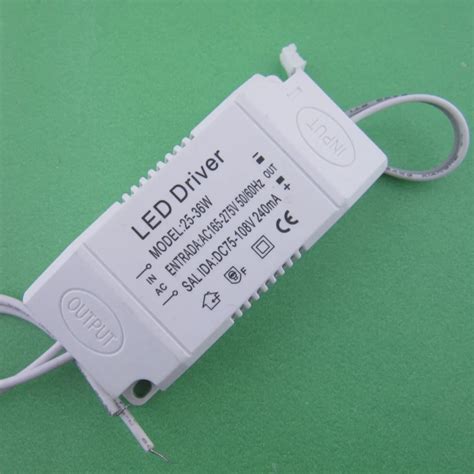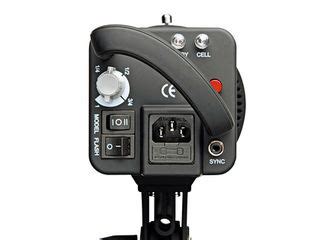What is a Studio Lighting Driver?
A studio lighting driver, also known as a studio-lighting-driver, is an electronic device that controls and powers studio lighting equipment. It is an essential component in professional photography and videography studios, enabling photographers and videographers to precisely control the intensity, duration, and color temperature of their lighting setup.
Studio lighting drivers come in various types and sizes, each designed to cater to specific lighting needs and setups. They range from simple, single-channel drivers that control one light to complex, multi-channel drivers that can control multiple lights simultaneously.
Types of Studio Lighting Drivers
There are three main types of studio lighting drivers:
1. Constant Voltage Drivers
Constant voltage drivers provide a fixed voltage output to the connected lighting equipment. They are commonly used with LED lighting fixtures that require a specific voltage to operate correctly. These drivers are simple to use and relatively inexpensive, making them a popular choice for small studios and beginner photographers.
2. Constant Current Drivers
Constant current drivers provide a fixed current output to the connected lighting equipment. They are typically used with high-powered LED lights that require precise current control to maintain consistent brightness and color temperature. These drivers are more expensive than constant voltage drivers but offer greater control and stability.
3. Intelligent Drivers
Intelligent drivers, also known as programmable drivers, offer advanced features and control options. They can be programmed to control multiple lighting fixtures simultaneously, adjust brightness and color temperature, and even create complex lighting sequences. These drivers are the most expensive but offer the greatest flexibility and creative control.

Key Features to Consider When Choosing a Studio Lighting Driver
When choosing a studio lighting driver, there are several key features to consider:
1. Power Output
The power output of a studio lighting driver determines the maximum wattage it can supply to the connected lighting equipment. It is essential to choose a driver with sufficient power output to handle the total wattage of your lighting setup.
2. Number of Channels
The number of channels on a studio lighting driver determines how many lights it can control simultaneously. Single-channel drivers are suitable for simple setups, while multi-channel drivers are ideal for more complex setups with multiple lights.
3. Dimming Control
Dimming control allows you to adjust the brightness of your lights. Some drivers offer simple on/off control, while others provide more advanced dimming options, such as continuous dimming or step dimming.
4. Color Temperature Control
Color temperature control allows you to adjust the color of your lights, from warm to cool. This feature is particularly useful for achieving specific moods or matching the color temperature of other lights in your setup.
5. Wireless Connectivity
Some studio lighting drivers offer wireless connectivity, allowing you to control your lights remotely using a smartphone or tablet app. This feature is convenient for adjusting your lights without having to physically access the driver.

Comparison of Popular Studio Lighting Drivers
| Driver | Type | Power Output | Channels | Dimming | Color Temp | Wireless |
|---|---|---|---|---|---|---|
| LIFUD LF-GDE060YA | Constant Current | 60W | 1 | Continuous | No | No |
| Inventronics EUD-200S140DT | Constant Current | 200W | 1 | 0-10V | No | No |
| Moons’ PCD-40-1400B | Constant Current | 40W | 1 | PWM | No | No |
| Lumisheet LS-100-24 | Constant Voltage | 100W | 1 | No | No | No |
| eldoLED POWERdrive 561/S | Intelligent | 50W | 4 | DMX/DALI | Yes | Yes |

FAQ
1. Can I use any studio lighting driver with my lights?
No, you need to choose a driver that is compatible with your specific lights. Make sure to check the voltage, current, and control requirements of your lights before purchasing a driver.
2. How do I determine the power output I need for my studio lighting driver?
To determine the power output you need, add up the wattage of all the lights you plan to connect to the driver. Choose a driver with a power output that is equal to or greater than the total wattage of your lights.
3. Can I use a constant voltage driver with a constant current light?
No, you should not use a constant voltage driver with a constant current light, or vice versa. Using the wrong type of driver can damage your lights or cause them to malfunction.
4. What is the difference between PWM and 0-10V dimming?
PWM (Pulse Width Modulation) and 0-10V are two different methods of dimming control. PWM dimming rapidly switches the light on and off to create the illusion of dimming, while 0-10V dimming uses a variable voltage signal to control the brightness of the light. PWM dimming is generally more precise and efficient, while 0-10V dimming is simpler and more common.
5. Do I need a studio lighting driver with wireless connectivity?
Wireless connectivity is a convenient feature, but it is not necessary for all studio setups. If you frequently need to adjust your lights remotely or want to control your lights using a smartphone app, wireless connectivity may be worth the extra cost. However, if you have a simple setup or prefer manual control, a driver without wireless connectivity will suffice.
Conclusion
Choosing the right studio lighting driver is crucial for achieving optimal performance and control over your studio lighting setup. By understanding the different types of drivers available and considering key features such as power output, number of channels, dimming control, color temperature control, and wireless connectivity, you can select a driver that best suits your specific needs and budget.
Remember to always choose a driver that is compatible with your lights and has sufficient power output to handle your total lighting wattage. With the right studio lighting driver, you can take your photography and videography to the next level, creating stunning visuals and unforgettable images.

No responses yet